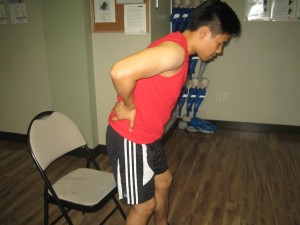The iliopsoas muscle is one of the biggest and powerful hip flexors which are a combination of the psoas and iliacus muscles. Always bear in mind that the iliopsoas starts on the lumbar spine vertebrae and connects to the top part of the femur.
The muscle is responsible for movement of the trunk and legs. The iliopsoas can also be damaged during abrupt movements that can cause tearing of the fibers or via repetitive movement during running that leads to inflammation. Injuries to the muscle belly or tendon can cause various symptoms.
Back pain
Low back pain is often incorrectly diagnosed as it relates to the joints in the lumbar spine. Special attention might be given to these joints when the source of the diffuse aching pain might be the iliopsoas muscle.
Due to its location, it is virtually inaccessible for treatment. Always bear in mind that the pain can spread to the thoracic spine, gluteal region as well as the lateral hip area.
Pain during movement

Oftentimes, an individual with an iliopsoas muscle injury will notice pain while standing from a sitting position or when sitting and extending the leg. The repetitive movements of the trunk or leg during sit-ups can cause the muscle to become strained and inflamed.
Sciatica
The iliopsoas muscle inserts into the vertebrae of the lumbar spine and once it spasms; it can lead to significant dysfunction in the spine as well as add pressure on the discs. If a disc is already bulging, it might be thrusted out its normal space to add pressure on the nerve roots to trigger sciatica.
This pain is characterized as burning or numbness that radiates down from the buttock all the way down the back of the leg. The symptoms can be felt all the way to the toes.
Hip pain
Since the iliopsoas muscle connects to the lesser trochanter which is the area right beneath the hip joint, irritation of the muscle often occurs as pain at this point. The point tenderness is quite common along with the swelling.
Scoliosis
The hypertonicity or spasm of the iliopsoas muscle on one side can lead to an unusual curve or scoliosis to develop in the lumbar spine. Once this occurs, it will be followed by joint dysfunction and eventually lead to wear and tear breakdown of the spinal joints. The treatment is focused on reducing the spasm as well as rehabilitation of the muscle.

